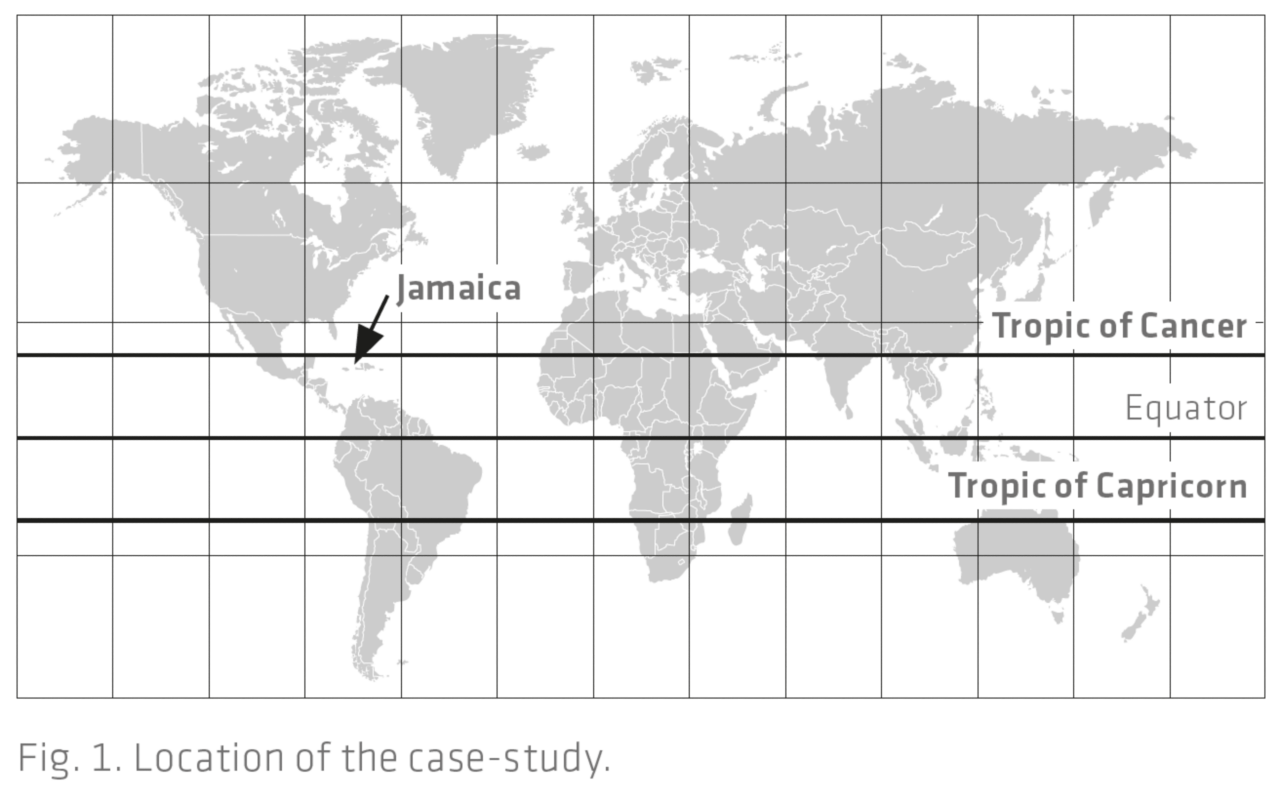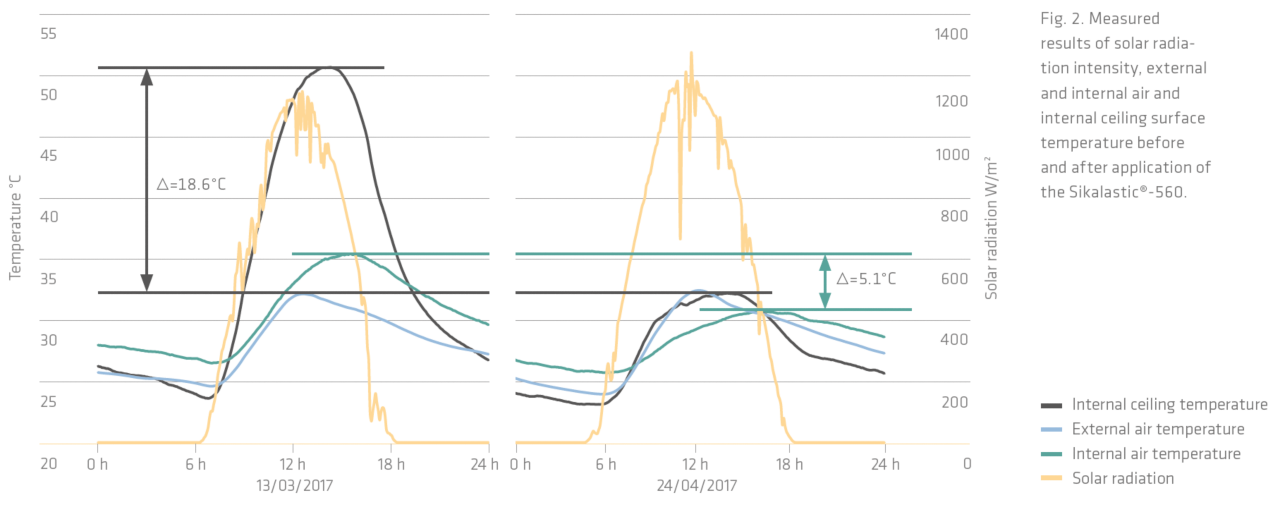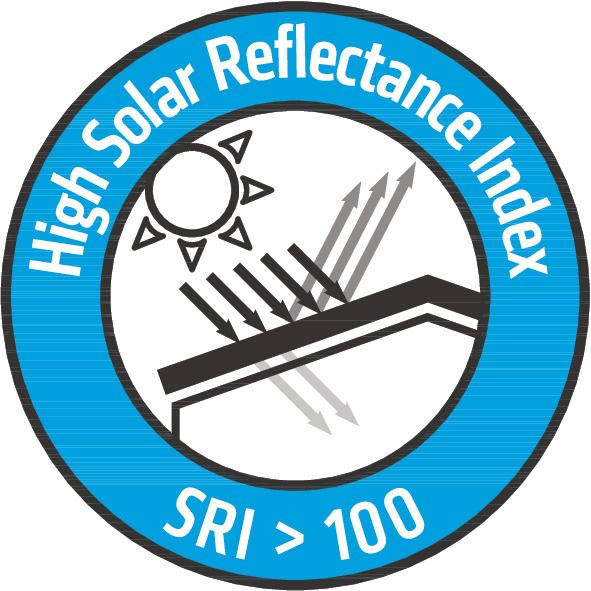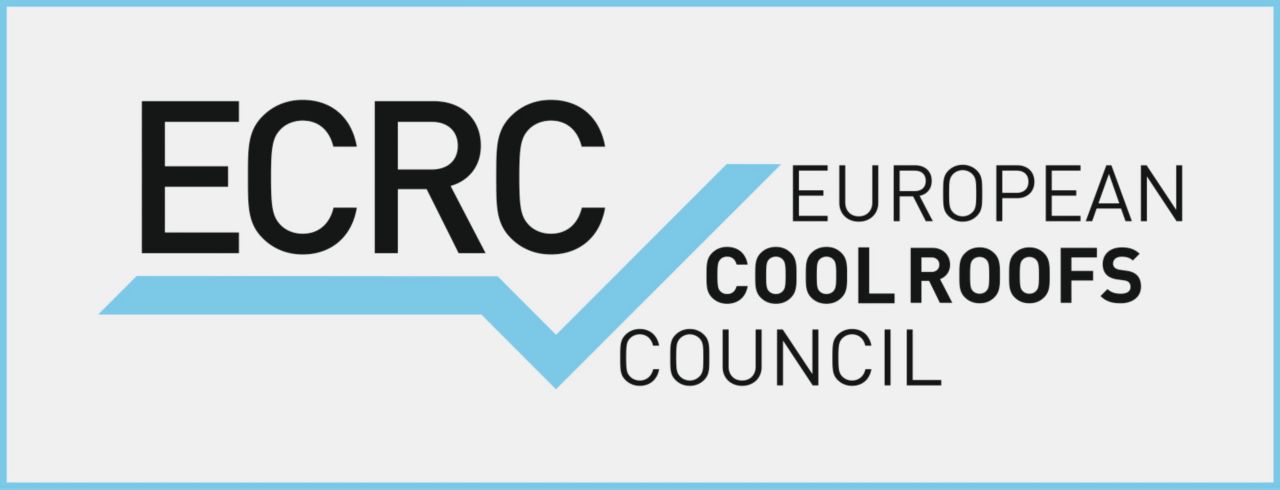Cool roofs are one of the most effective and easiest solutions to increase the thermal comfort of buildings and reduce cooling costs in hot climate countries with high solar radiation and outdoor temperatures. Brunel University London, in cooperation with the European Cool Roofs Council, Sika Services AG and the University of Technology in Kingston, evaluated a project in Jamaica to study how the application of a solar roof can affect the thermal comfort of residential buildings in hot climates.

Subject of the Study
- The subject of study was the typical uninsulated cast-in-place concrete roof of a low-income house in Jamaica.
- The flat roof measures 36 m², and the thermal transmittance (U-value) of the roof assembly was 5.68 W/m²K.
- Temperatures were monitored before and after the application of Sikalastic®-560, a highly reflective liquid-applied coating.
- The monitoring focused on the surface temperature of the roof and ceiling and the air temperature inside the house.

Preliminary Measurements
- Preliminary measurement began in September 2016.
- All the monitoring sensors were in place by January 2017.
- 4 sensors were installed on the rooftop to measure external roof temperatures and 4 on the ceiling to measure surface temperatures inside. In addition, 2 sensors were installed in the living room and the kitchen to measure the air temperatures in those rooms.
- The Sikalastic®-560 was applied between 22 March and 16 April 2017, and monitoring continued until July 2017.
Application of Sikalastic®-560
In first phase of application, Sikalastic®-560, diluted with 10% water, was applied as a primer. Then, 3 coats of the roofing product were applied within the over-coating times. The total system buildup was ~ 1.4 kg/m². Even though the average solar radiation and average outdoor temperatures are higher in April than in March, a significant decrease in roof temperature and indoor air temperature was measured after the application of Sikalastic®-560.
Figure 2 displays measurements taken on two days: The first day (13 March) was before the cool roof was applied, and the second (24 April) was after the application. Both days had similar air temperatures (37.4°C max. on 13 March and 38.2°C max. on 24 April) and similar average global solar radiation intensity during the day-time (416 W/m² on 13 March and 428 W/m² on 24 April). The indoor ceiling surface temperature was higher on 13 March than on 24 April by a maximum of 18.6°C and by an average of 6.8°C. Indoor air temperature measurements show that after the application of Sikalastic®-560 the living room was cooler by a maximum of 5.1°C and an average of 2.3°C.


Temperature Distribution Before and After the Application of Sikalastic®-560

Study Conclusions
This study shows that the application of a cool roof can significantly improve the thermal comfort of houses and thus improve the living conditions of the inhabitants.
Chief potential beneficiaries of this type of solution are low-income families who experience overheating of their houses, typically located near the equator in areas with high solar radiation intensity throughout the year (4 – 6 kWh/m²) and high outdoor temperatures.
Effective cooling strategies are urgently needed for these poorly insulated buildings in tropical climates, and upgrading the roof with Sikalastic®-560 is a relatively low cost option.
The product is easy to apply and does not require professional applicators.
Study Partners
This study was conducted as part of the EPSRC Global Challenges Research Fund Institutional Sponsorship Award 2016 – Brunel University (EP/P510749/1).
For more information about the project see: Energy and Buildings, Volume 176, 1 October 2018.
Sikalastic®-560 with High Reflectance Properties
This economic, eco-friendly liquid applied roofing waterproofing membrane is included in the Cool Roof Rating Council (CRRC) with the following initial values:
- Solar Reflectance: 0.82
- Thermal Emittance: 0.90
- Solar Reflectance Index (SRI): 106




Author
Heinz Meier
System Engineer
Solar Roof / Roofing Sustainability
Target Market Roofing
Sika Services AG

